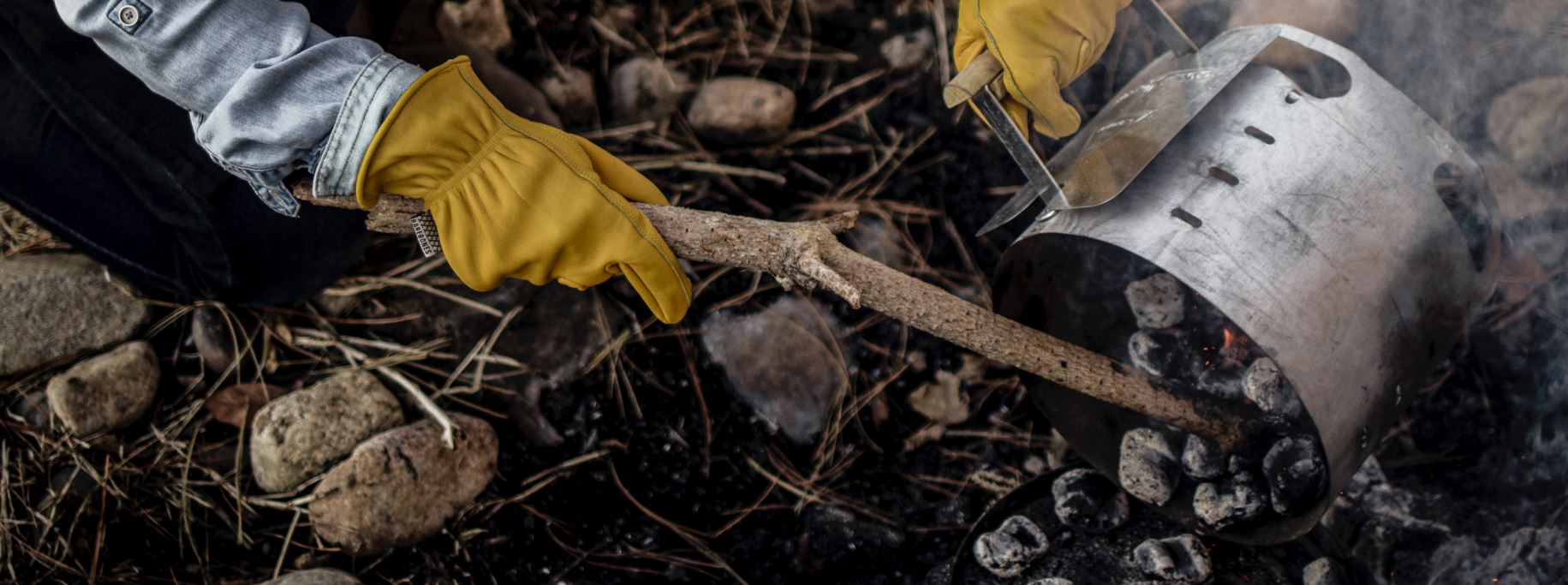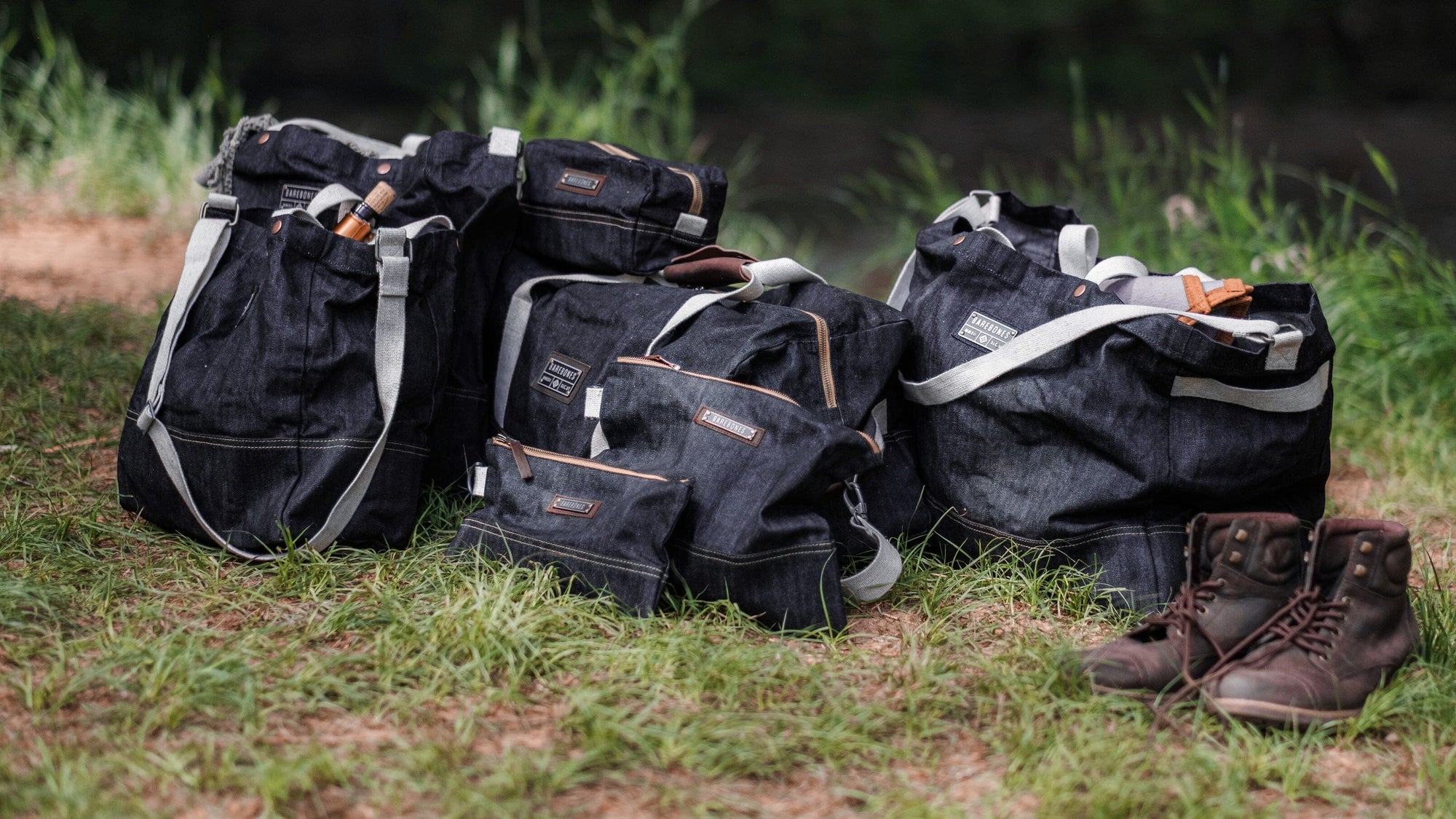In the world of outdoor cooking, there’s no topic more greatly debated than that between cooking with natural wood charcoal vs. charcoal briquettes. Backyard grill masters and experienced camp chefs of all types seem to defend their preference with as much fiery passion as they stoke in their pits. You may be wondering, which is the better medium to cook with, wood lump coals or charcoal briquettes? The truth is, there’s no right or wrong, better or worse. There are pros and cons to each cooking medium. It comes down to a matter of preference for each outdoor cook’s style, the recipe, and the cooking environment. There’s essential information to know about both wood lump charcoal and charcoal briquettes so you can make the best choice for yourself.
Over The Fire Cooking
We’ve all seen those entrancing images of an outdoor cook standing over a fire with flames licking savory meats and blackened vegetables dangling in the blaze. I’ll be the first to admit that scenes of this sort are partially what attracted me to this craft years ago (and still do). It’s difficult to not want to be the main character of that theatrical and immensely photogenic story frame.
When I began to actually cook outside, I quickly realized that over the fire cooking doesn’t necessarily make good food. Flames don’t cook food. They blacken the outermost surface of the item. Depending on the recipe, the food, and the outdoor chef’s technique, that can certainly be a desirable effect. But usually, that technique is only utilized for a brief moment in the cooking process. The bulk of the cooking time is spent managing heat, so the food cooks evenly to tender perfection. The truth of the matter is that the heat of a well-established fire is what cooks food. Embers and the white-hot coals are the cooking medium for outdoor chefs.
With that basic level of understanding established, we then reach the question about which sort of charcoal to use: natural wood charcoal or charcoal briquettes.
Outdoor Cooking with Wood & Natural Wood Coals
Lumps of wood charcoal can be created on-site by cooking down wood logs, or they can be purchased pre-formed in a bag. As you can imagine, buying compressed wood lump charcoal saves a bit of time because it's ready to light and use right away. Depending on the outside environment and the amount of wood, cooking down the wood log into coals can take 45 minutes or longer. Tending a large woodfire until the logs cook down into solid blazing coals is an unforgettable way to cook a meal outdoors and my favorite method when I have time. This traditional method is viewed as the most natural form because there are no chemical additives in the coals. I also like this method because the type of wood selected can infuse a certain flavor into food cooked directly over the heat, such as hickory or a smoky applewood flavor.
How To Cook With Wood Charcoal
After the wood fire has been burning strong and charcoal starts to form, separate a portion of the wood charcoal away from the main fire. Use the wood coals to cook food over a grill grate or in a cast iron pan. Make sure to keep the main log fire stoked, so it continues to break down and create a continuous supply of coal for cooking.
Pros & Cons of Pre-Formed Lump Charcoal
Pre-formed lump charcoal offers many benefits and provides wood flavors to infuse into meals. It lights fast, burns hotter than briquettes, and leaves very little ash compared to briquettes. Lump charcoal is also more responsive to oxygen, making it easier to control the temperature by maneuvering the coals. The drawbacks to natural wood charcoal are that they burn through very quickly, which means you need to use more to maintain consistent heat. They also require near-constant tending. Pre-formed lump charcoal are more expensive than a bundle of wood and charcoal briquettes. Their sizes can also be inconsistent. This can make managing consistent heat a challenge.
Outdoor Cooking with Charcoal Briquettes
Charcoal briquettes are manufactured wood by-products compressed with chemical additives that help them light and burn consistently. These additives give off a chemical smell when lit. Burn the coals until they’re white to avoid any chemical smells transferring to food. When using briquettes with cast iron, there’s no need to worry about chemical burn-off transferring to food.
Benefits of Charcoal Briquettes
There are some great benefits to charcoal briquettes: they are inexpensive, widely available, easy to light, and extremely reliable. Charcoal briquettes burn evenly for extended periods and need very little management. This reliability goes a long way when maintaining consistent heat in variable outdoor weather. In addition to the chemical additives, another drawback to briquettes is that they create more ash than wood.
I prefer using charcoal briquettes in many camp cooking settings when I cook in cast iron, simply for ease of use. Charcoal briquettes are excellent for aspiring outdoor chefs and a great option for those “light it and forget it” dutch oven dinners.
How to Cook with Charcoal Briquettes
Light a full chimney of charcoal briquettes in a charcoal chimney. Using a little lighter fluid may be necessary to get all the coals lit. Once all the briquettes are mostly white, they’re ready to cook with. This process usually takes about twenty minutes. Cook food on a grate directly over the hot briquettes, or position the coals on a dutch oven. Use a coal shovel to position a small circle of charcoals under the dutch oven legs, then layer a ring of charcoals around the rim of the lid to distribute heat evenly and cook food perfectly.
ABOUT
Brianne Dela Cruz is a master gardener, wild forager, campfire foodie, and acclaimed writer and photographer. From her home in Salt Lake City, she teaches online gardening and foraging courses for modern folks and budding naturalists as well as hosts seasonal community gatherings. Brianne's blog and online school, Gather & Grow, is a community of folks exploring the intersection between nature and personal growth by discovering ways to slow down and nourish themselves with nature.







